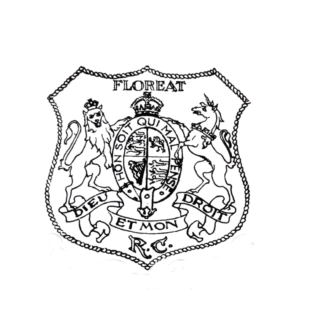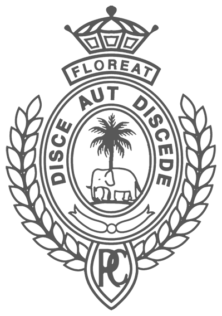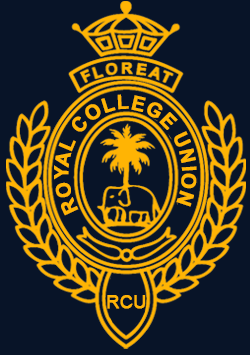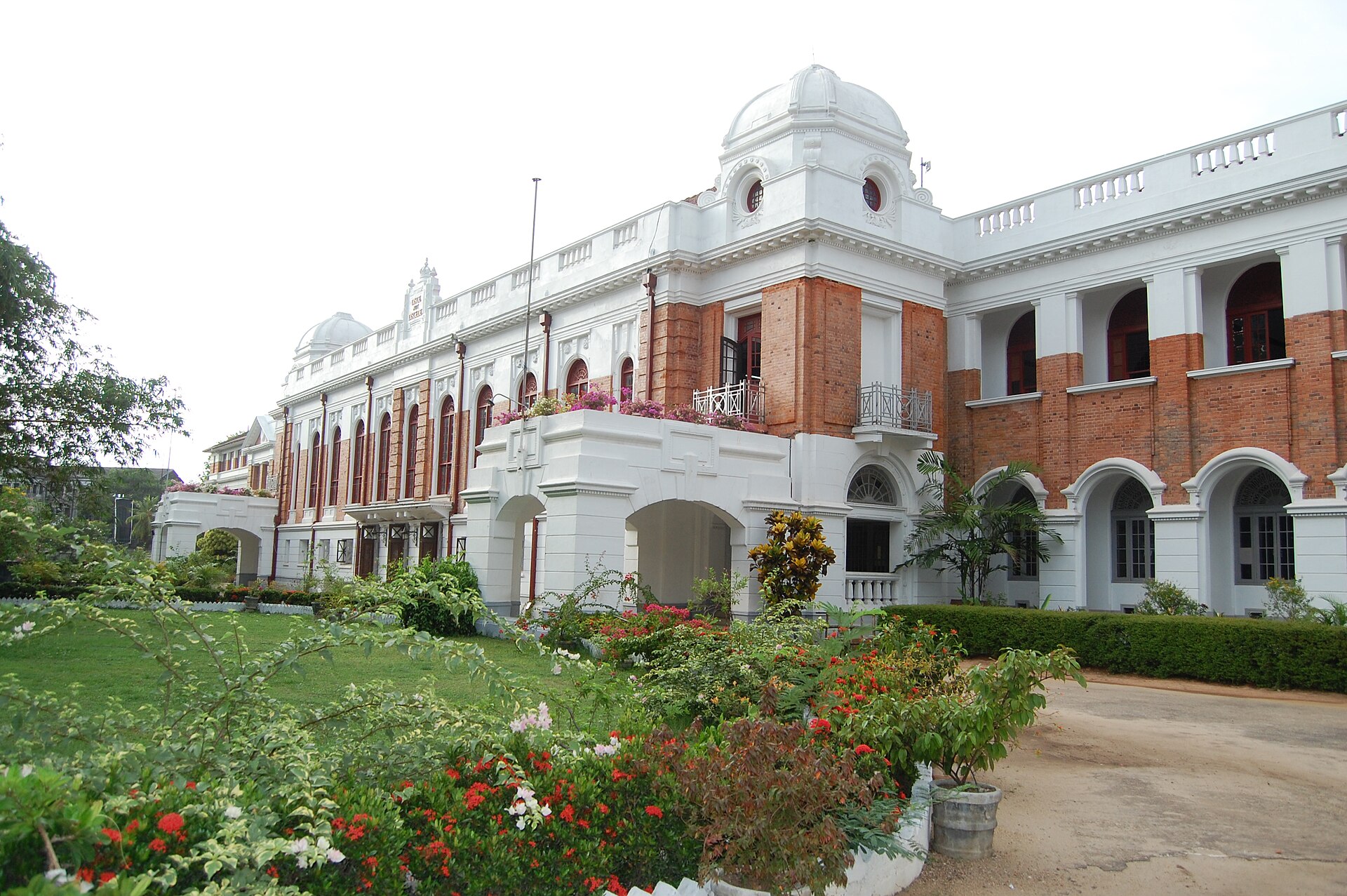Founding and Early Years (1835-1881)
Royal College, one of the oldest and most prestigious educational institutions in Sri Lanka, traces its origins back to January 1835. It began as a private school named “The Hill Street Academy,” located at Hill Street, Wolfendhal. The school was a modest establishment at its inception, with just 20 students and one master, Reverend Joseph Marsh. This small beginning belies the grand institution it would eventually become.
Shortly after its inception, the government of Ceylon (as Sri Lanka was then known) recognised the need for a more structured and advanced educational system for the colony. Prominent citizens of Colombo, seeking a liberal education for their children, appealed to the Governor for an institution that could provide such education. Responding to this need, the Hill Street Academy was abolished, and in January 1835, the foundation was laid for what would become the Colombo Academy, with Rev. Marsh as its first Principal. The Academy was initially located on Massenger Street before being relocated to San Sebastian in the heart of Colombo.
In 1859, the Colombo Academy was affiliated with the University of Calcutta, alongside Queen’s College. This affiliation marked a significant milestone in the school’s history, establishing its academic credentials.
Transformation into Royal College (1881-1913)
In August 1881, the Colombo Academy underwent a significant transformation when its official title was changed to Royal College. This change symbolised the institution’s growing prominence and its role as a leading educational institution in Ceylon. However, the school’s physical infrastructure had become inadequate for its expanding student body and activities. The original buildings and playgrounds were cramped, leading to the decision to relocate the college to new premises on Thurstan Road, Colombo.
Government-sanctioned construction of the new buildings began in 1906, and on May 31st, 1911, His Excellency Sir Henry McCallum, the then Governor, laid the foundation stone of the new Royal College. In his speech, the Governor emphasised the government’s educational policy, stating that Royal College should be maintained as a government institution and serve as a pioneer of modern education. By the third term of 1913, the school was officially transferred to its new premises, with an enrolment of 152 students.
Expansion and Modernization (1913-Present)
Plans for further expansion of Royal College were drawn up in 1918 and approved by the government. The new building, designed to serve as a model for a fully organized secondary school, began construction in August 1919. Even before the ground floor was completed, nine classes were moved into the new building at the beginning of the second term in May 1923. The official opening of the new buildings by His Excellency the Governor took place on October 10th, 1924.
As Royal College settled into its new home at Reid Avenue, Colombo, it began to grow rapidly. Today, the college boasts a student population of over 8,500 and a staff of more than 300 dedicated teachers. The school is situated in the heart of Colombo’s uptown area, surrounded by beautiful avenues lined with grand trees. It is the best-equipped school in the country, with state-of-the-art laboratory facilities, computer labs, and teaching aids.
Academic Excellence and Extracurricular Prowess
Entrance to Royal College is highly competitive, with about half of the student population comprising talented individuals from across the country who have excelled in the national-level examination for grade 5 students. If in the final analysis, it is the quality of the output that matters, then Royal College does indeed have a proud record.
Royal College has maintained an unparalleled academic record, consistently achieving top results in national-level examinations year after year. A significant number of its students proceed to prestigious universities in Sri Lanka and abroad, furthering their education and contributing to various fields globally.
In addition to academics, Royal College is renowned for its extracurricular activities. The school has extensive facilities, including three large playgrounds and a swimming pool, which support a wide range of sports such as rugby, cricket, soccer, basketball, volleyball, swimming, tennis, chess, table tennis, and badminton. Royal teams regularly excel at national level competitions, and many Royalists go on to represent Sri Lanka in international competitions. A significant proportion of the country’s sports teams, including many team captains, have been past students of Royal College.
The school also fosters a vibrant culture of clubs and societies, with over sixty organizations catering to diverse interests ranging from drama to computers.
Distinguished Alumni and Legacy
Royal College has produced a remarkable array of alumni who have gone on to achieve significant success in various fields. Former Presidents, Prime Ministers, Leaders of the Opposition, Chief Justices, and Attorney Generals are among the distinguished old Royalists who have made their mark in Sri Lanka and beyond. Many old Royalists hold key positions in government, industry, and commerce.
The attachment to the school by its past students is deeply reflected in the activities of the Royal College Union (RCU). The OBU has branches in the United States, Australia, the United Kingdom, the UAE, Canada, and other countries, actively contributing to the school’s well-being.
Tradition and Contribution
Rich in tradition and characterised by over 150 years of hard work, dedication and achievement, Royal College is an institution that imparts not only knowledge but also the capacity to build harmonious social relationships as emphasized in the college anthem: “Learn of books and learn of men and learn to play the game.” The college motto, “Disce aut Discede” (Learn or Depart), encapsulates the spirit of excellence that has driven generations of Royalists to achieve greatness in their respective fields. Royal College remains a beacon of education in Sri Lanka, continuing to inspire and mould future generations of leaders.
The history of Royal College is a testament to its enduring legacy as a pioneer of education in Sri Lanka, a school that continues to nurture the intellectual, physical, and social development of its students, ensuring they are well-equipped to contribute to society.
Coat of Arms
Embedded just above the heart of all young Royalists, the Royal College coat of arms, with all of its intricate elements and components, is a testament to all the history and values that the College holds dear.
There is no mention of a College Crest in any document prior to 1892. Ceylon being a Crown Colony of the British Empire, the Imperial Emblem – the Lion and the Unicorn was Ceylon’s Badge. The Colombo Academy, later named the Royal College being a Government Educational Institute had to use the British Royal Arms Emblem. The first display of the Crest (Royal Arms) is on the cover of the first Royal College Magazine of January 1893. In 1895 the Cricket Team had a simple Crest on a Blue Blazer. The Crest on the top Blazer pocket had a shield with the letter R.C in Gold with a scroll. The word FLOREAT (meaning let flourish) was embroidered in gold letters above the Shield.

Imperial Emblem – the Lion and the Unicorn
The photograph in this Chapter depicts various designs of the Imperial Emblem on the Magazine cover and on the cover of books given at the College Prize Distributions. The book given as a Prize to R. A. I. Ekanayake (Cricket Captain) in 1897 had the Lion and the Unicorn emblem.

Crest Circa 1910
The British Royal Arms was used by the Cricketers as the Crest on a Blue Blazer from about 1905 and continued to be used till 1921. The word ‘Floreat’ appeared above the Crest and the letters R.C. below the Crest. The Royal Arms was rounded with Blue and Gold braiding resembling a Shield. The year in which the player represented the College appeared on a scroll below the Shield. The British Imperial Emblem has appeared in various shapes and sizes in the College Magazines in the years when the Royal College had no fixed ‘Crest’. For example, the Lion and Unicorn are seen in various positions and the Victorian crown was replaced by the Tudor crown in 1906.
The New Crest
In 1921 Principal Reed appointed a Committee of the newly formed Games Club to recommend a new Crest. The Editor of 1922 Easter Term Magazine wrote,
“It is as it should be, and it was felt that the Coat of Arms and Crest should be something unique to the institution.”
The power wielded by the British Empire in their heyday just emerging victorious from World War I was great. Looking back 60 years, why the British Government agreed to Principal Reed’s suggestion to dispense with the British Royal Arms and have a purely Ceylon symbol is a mystery. The new symbol strangely happened to be the Elephant and the Coconut Palm. To add to the mystery, of a crest with a purely Ceylon symbol, it was only for the Royal College and no other Government Institution. Whether anything of a similar nature was allowed in any other British Dominion or Colony at that time is not known.

The Royal College Crest Circa (1921 -1957)
“I have to announce with the greatest pleasure that the Government has sanctioned the use of our new Royal College Arms in place of the Royal Arms in the past in common with many branches of the Government throughout the Empire. For the design which is produced in today’s Prize List and on many of the Prize books, we are indebted to Mrs. F. D. Wijesinghe, the wife of a member of the staff.”
Principal Reed in his Prize Day Speech on 8th December 1922
The Magazine says a design for the Royal College arms has now been approved by the Government so that we shall no longer share armorial bearings with every Government Department all over the Empire. We are not versed in heraldic technology, but a layman’s description of the new arms will be of interest and is as follows:
“Elliptical shield with Motto Disce Aut Discede round the edge. In the shield, an Elephant and a Palm is surrounded by the word FLOREAT on a scroll which in turn surmounted by the Crown and Laurel Wreaths on the right and left of the shield and separated from it with initials R.C. at the base while the two wreaths nearly meet.”
“For the approved design, the school is indebted to Mr. F. D. Wijesinghe to whom we offer our cordial thanks. It is hoped that representations of the arms will soon be on view in such printed places as the Royal (College) Arms have usually occupied. Colours of these arms have not yet been settled. Discussion of the subject is invited when the design has been seen generally.
With the granting of Independence in 1947, Ceylon’s National Emblem changed. The Sinhalese Crown replaced the British Crown, but it was 10 years later that the original College Crest of 1922 with the British Crown was replaced with the Sinhalese Crown. The College Magazine first carried the new crest in the April 1957 issue and the Annual Prize Day Report first had the new crest in 1959.

The Royal College Crest Circa 1957 to Present
Mottos
The mottos serve as words of wisdom to live by for Royalists young and old. They are preserved not merely because of historical significance, but because the phrases act as guiding principles when navigating the journey of life.
Disce Aut Discede
The main motto of the College means ‘learn or depart’ which is displayed on the College crest, above the main building and on the engraved stone at the main entrance of the present College building. The first mention of this motto is during the regime of Principal Todd (1871-1878) who constantly reminded the dullards that they must learn or get out. The identity of the individual who gave the Motto to the school is not recorded. Neither the Files of the Schools Commission, the Department of Instruction, nor the Public Administration Reports make mention of the Motto. Reminiscences written by Old Boys from 1893 onwards do not make any mention of friends who have departed for not learning during the 150 years. Records only show that the vast majority have learnt and departed bringing credit to the College.
Palmam Qui Meruit Ferat
Inscribed on a scroll set into the wall behind the stage of the Main Hall, this means ‘let whoever earns the reward, bear it’. Being deserving through your own merit is a prized principle in the College, and thus this motto is apt for the students to live by.
Labor Omnia Vincit
Found as well on a scroll atop the wall behind the stage of the Main Hall, this motto gives the meaning of ‘work conquers all’. Emphasizing the importance of toil, this phrase embodies the determination of a student of the College to achieve success.
Principals of Royal College
Rev. Joseph H. Marsh (1835 – 1838)
J. Brooke H. Bailey (acting) (1839 – 1842)
A. Kessen (1842 – 1842)
J.F. Haslam, BA(Cantab)(1839 – 1840)
Rev. Barcroft Boake (1842 – 1870)
George Todd (1870 – 1878)
John Barnabas Cull (1878 – 1890)
John H. Marsh (Jnr.) (1890 – 1892)
John H. Harward (1892 – 1902)
Charles Hartley (1903 – 1919)
Major H. L. Reed (1920 – 1932)
L. H. W. Sampson (1932 – 1938)
E. L. Bradby (1939 – 1945)
J. C. A. Corea (1946 – 1953)
Dudley K. G. De Silva (1954 – 1966)
Bogoda Premarathe (1967 – 1971)
D. G. Welikala (1971 – 1972)
D. J. N. Seneviratne (1972 – 1972)
L. D. H. Peiris (1972 – 1980)
C. T. M. Fernando (1981 – 1986)
B. Suriarachchi (1986 – 1994)
S. H. Kumarasingha (1994 – 1997)
H. L. B. Gomes (1997 – 2003 )
H.A. Upali Gunasekera (2003 – 2016)
B. A. Abeyrathna (2016 – 2021)
M.V.S. Gunathilake (2021-2022)
R. M. M. Rathnayake (2022-2023)
Mr. Thilak Waththuhewa (2023-Present)

